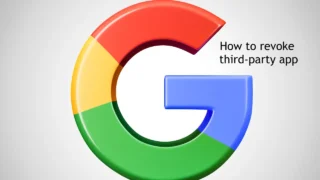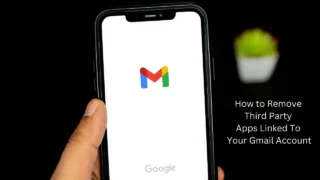Starting a fitness blog is an excellent method to assist others in reaching their health goals while earning a large income.
You can rely on us to help you construct one. At Authority Hacker, we have helped over 14,000 students build successful, profitable blogs in various genres, including the burgeoning world of fitness.
We have also figured out how to efficiently monetize a blog, as proven by our large blogging income.
To help you start your own blogging empire, we have compiled this detailed 11-step guide on how to start a fitness blog.
Why Should You Start a Fitness Blog?
There are various reasons to consider starting your own fitness blog, the first of which is to earn money.
Affiliate marketing is one of the most popular methods for monetizing a blog. Our affiliate marketing statistics show that affiliate marketers in the health and fitness category earn an average of $7,194 each month. Other ways to make money include running display ads, selling your own items, and providing coaching services.
Fitness blogging is also a wonderful way to engage with a growing online community of health-conscious individuals. You can learn from other professionals in your field, broaden your knowledge, and form meaningful relationships.
You can even become a fitness influencer by posting blog posts, photographs, videos, and suggestions on social platforms like TikTok, YouTube, and Instagram.
Top Successful Fitness Blog Examples
Let us look at three successful fitness blog examples.
1. Nerd Fitness
Nerd Fitness delivers scientific training programs and assistance for anyone looking to improve their fitness. Click here to visit the site.
2. Garage Gym Reviews
Garage Gym Reviews provides honest reviews of home gym items such as treadmills, weights, vitamins, and more. Click here to visit the blog.
3. Run Eat Repeat
Monica Olivas runs a personal blog called Run, Eat, Repeat. She produces posts about long-distance running tips, race recaps, recipes, and other related topics. Click here to visit the blog.
How to start a fitness blog in 6 steps
Ready to start your fitness blog? Here are six important steps to get you started:
- Choose a fitness niche to target with your blog.
- Choose your blog maker or blogging platform.
- Choose a suitable blog name.
- Create and plan compelling fitness blog material.
- Promote your fitness blog.
- monetize your fitness blog.
01. Choose a fitness niche to target with your blog
When creating a fitness blog, it is critical to choose the correct niche. A concentrated specialisation enables you to target a specific audience, acquire expertise, and produce material that has a deep impact.
This type of blog can be used to cater to a variety of interests and demands in the fitness business. Here are some fitness blog niche examples:
- Home exercises and fitness routines: Offer readers efficient home-based workout routines, recommendations for using minimal equipment, and advice on remaining fit without a gym membership.
- Nutritional advice: Provide expert advice on balanced diets, meal prep procedures, and recipes that are appropriate for fitness goals.
- Fitness gear and equipment: Share information on the latest fitness gear, equipment, and wearables to assist readers in making informed purchasing decisions.
- Weight loss journeys: Document personal weight reduction trips to provide inspiration for obtaining long-term success.
- Wellness: Learn about the interplay of mental and physical wellness, including topics like meditation, stress reduction, and holistic approaches to health.
We have also compiled some fitness blog examples to help you get started in a certain niche:
- Yoga for novices: This blog could be geared towards novices who want to incorporate yoga into their fitness routines. It could include fundamental yoga positions, breathing techniques, and mindfulness exercises.
- Plant-based nutrition: This blog example could be aimed at people who follow a plant-based diet and want to improve their fitness. It might provide nutritional advice, recipes, and information on plant-based protein sources.
- Running adventures: This blog example, aimed at running fans, could cover a variety of topics such as training schedules, race experiences, and injury prevention suggestions.
- High-intensity interval training (HIIT): A blog about the benefits of HIIT workouts, offering readers workout programmes, explanations of their effectiveness, and success stories.
- Postpartum fitness: Designed for new mothers, this blog example could provide advice on postpartum fitness, healing, and self-care activities to promote physical and emotional well-being.
When deciding on a fitness blog niche, consider your own skills, passion, and the demands of your intended audience.
A well-defined specialty will allow you to stand out in a congested digital scene and gain a dedicated readership.
02. Select your blog maker or blogging platform
Choosing the right blogging platform is an important step towards launching your fitness blog. A reputable blog creator not only simplifies the construction process, but also provides critical features such as hosting and security.
When launching your fitness blog, choose a blogging platform like Wix that provides a streamlined experience and tools that make developing and monetizing your site easy.
Your blog’s design should be clean and user-friendly on all devices. Use your blogging platform’s customisation features to personalise the appearance of your site to your fitness specialty. Prioritise simple navigation, legible writing, and visually engaging imagery.
Branding is essential for distinguishing your fitness blog and establishing a recognisable personality. Your blog’s style, colours, typography, and imagery should be consistent with your fitness specialty.
03. Pick the right blog name
Choosing the correct blog name and domain name for your fitness blog is an important step in establishing your site’s identity and credibility.
Your blog’s name creates the first impression viewers get of your material. A well-chosen name can catch readers’ curiosity and establish the tone for the stuff you will present.
If you are having trouble coming up with an interesting blog name, try using a blog name generator or looking through a list of blog name suggestions.
Tools like these can provide creative inspiration by recommending catchy, meaningful names based on keywords specific to your niche.
Additionally, your domain name serves as the online address for your blog. Your domain name should reflect the name of your site and the fitness niche it serves, while also being memorable and easy to type.
A concise and meaningful domain name might also help your blog rank higher in search engines.
If you truly want your blog to stand out, think about using the blog domain extension. It is a clear and distinctive method to make your blog and content stand out.
Examples of Fitness Blog Names:
FitLifeJourney.com
WellnessWarriorHub.com
ActiveFusionFitness.com
StrongBodyMind.com
04. Write and plan engaging blog content
Plan your fitness blog’s material intelligently. Create a content calendar that incorporates both evergreen and current themes.
Address the audience’s needs with training programmes, nutrition advice, and motivation. Increase interaction by including visuals, such as photographs and videos, in your postings.
Additional helpful practices to consider:
Use a clear blog format using headings, subheadings, and bullet points to make it easier to read.
Capture your readers’ attention with a compelling beginning that emphasises the post’s importance.
Cite trustworthy sources and studies to ensure that your material is accurate.
Provide readers with actionable tips for their fitness journey.
Share personal tales or customer success stories to engage readers on a human level.
Summarise the main issues and encourage people to take action or offer comments.
Blog post length varies, but strive for at least 1,000 words for in-depth and useful content. Longer posts allow you to delve deeper into themes and provide more value to your readers, and should be considered when selecting the length of a blog post.
Create attention-grabbing blog titles that clearly communicate what readers can expect from the topic. Use relevant keywords and phrases to increase your search engine presence. Remember that an excellent title might persuade people to click and discover more about your material. Potential fitness blog article topics include “5 Essential Stretches to Improve Flexibility,” “The Science Behind High-Intensity Interval Training (HIIT),” and “Mindful Eating: How to Cultivate a Healthier Relationship with Food.” All of these tiles clearly establish reader expectations.
Consider creating a blog post checklist to ensure that posts are completely edited before they are published.
05. Promote your fitness blog
Your blog will not sell itself. Promote your blog by using SEO tactics that increase its visibility in search engine results. To increase organic traffic, research relevant keywords and optimise your blog entries.
You will also want to leverage social media platforms such as Facebook, Instagram, and Pinterest to increase traffic to your fitness blog. Share your blog entries, interact with your audience, and employ appropriate content kinds to increase your reach. Consider engaging with other influencers and guest blogging on established channels to increase your credibility.
Create an email subscriber list and send out frequent newsletters with your latest blog pieces, updates, and special content. Email marketing is an effective approach to interact with your audience and keep them interested.
Finally, you will want to use blogging tools to streamline your promotional efforts. These tools allow you to schedule social media postings, automate email campaigns, and track the performance of your blog. Consider using analytics tools such as Google Analytics or Wix Analytics to have a better understanding of your blog’s traffic and user behaviour.
Monitor indicators such as website traffic, user engagement, and the most popular content. Analytics may help you fine-tune your content strategy by revealing what resonates with your target audience.
06. Monetize your fitness blog
Monetizing your fitness blog provides opportunity to leverage your passion and skills into a long-term income stream. Here are some of the most popular ways to make money blogging.
- Affiliate marketing entails collaborating with fitness-related companies and promoting their products or services via affiliate links. You receive a commission for each sale made using your unique affiliate link. To monetise your blog, you may evaluate training gear, supplements, or fitness apps and include affiliate links in your postings.
- Google AdSense: Include display advertisements from platforms such as Google AdSense on your fitness blog. You earn money when visitors click or watch these advertisements. Display advertisements might be a passive income source if your blog receives a consistent flow of traffic.
- Subscription fitness content and courses: Create premium content that adds value for your readers. This could include exclusive training routines, detailed nutrition recommendations, personalised coaching, or access to a library of fitness films. Readers pay a monthly subscription to access this premium content.
- Online fitness classes: Create comprehensive online courses that cover a variety of fitness topics. These courses might range from basic workout routines to specialised training plans. Course participants pay a fee to enrol and gain access to your course contents.
- Sponsored content: Work with fitness businesses to develop sponsored content. You might review their products, share success stories, or take part in sponsored challenges. Brands will then compensate you for your promotional efforts and reach.
- Ebooks and goods: If you are an expert in a specialised fitness field, you can write and sell eBooks, manuals, or merchandise based on that expertise. For example, a yoga blog may sell eBooks on mastering specific poses or obtaining mental balance through yoga.
- Crowdfunding: Engage your devoted followers by providing donation choices or launching crowdfunding initiatives. If your material appeals to your target audience, they may be eager to financially support your efforts.
- consultation or coaching services: Use your experience to provide personalised consultation (see how to start a consulting blog) or coaching services in fitness, wellness, or nutrition. If you want to learn more, see our guide on starting a coaching blog.
Final Thought on Fitness Blog.
We have discussed the necessary stages for launching a successful fitness blog…
Unfortunately, I was unable to cover everything.
Blogging has a high learning curve, and if I tried to cover every significant tip and strategy for increasing your chances of success, this guide would become a full-length book!
To assist you in mastering the main principles that will increase the likelihood of your fitness blog thriving, we created a free training filled with some of the most efficient secrets and practices we have learned in over a decade of profitable blogging.
On average, new bloggers who receive this free training are 83% more successful than those who do not.










